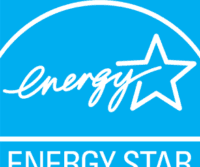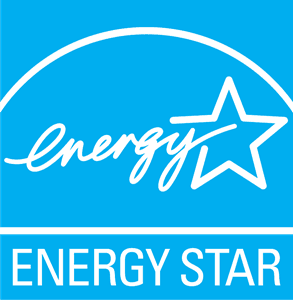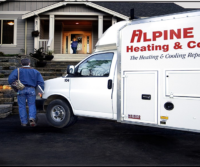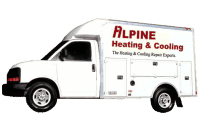Are you a new home owner in Anacortes, Burlington, Mount Vernon, La Conner or surrounding areas in Skagit county? If so, you understand how much those utility bills can impact your budget. The average household spends more than $2,200 a year on energy bills, with nearly half of this going to heating and cooling costs. It’s important to make smart decisions about your home’s heating, ventilating, and air conditioning (HVAC) system that can help save on energy costs, improve your overall comfort at home, and help fight global warming.
 Did you know the energy used in the average house is responsible for twice as many greenhouse gas emissions as the average car? When power plants burn fossil fuels to make electricity,they release greenhouse gases. By using less energy at home, you help reduce the emissions that contribute to global warming. ENERGY STAR is the government-backed program that helps us all save money and protect our environment with energy-efficient products and practices. Whether you are looking for recommendations about energy-efficient equipment, getting a quality installation, HVAC maintenance, or ways to make your heating and cooling system operate more efficiently, EPA’s ENERGY STAR program can help!
Did you know the energy used in the average house is responsible for twice as many greenhouse gas emissions as the average car? When power plants burn fossil fuels to make electricity,they release greenhouse gases. By using less energy at home, you help reduce the emissions that contribute to global warming. ENERGY STAR is the government-backed program that helps us all save money and protect our environment with energy-efficient products and practices. Whether you are looking for recommendations about energy-efficient equipment, getting a quality installation, HVAC maintenance, or ways to make your heating and cooling system operate more efficiently, EPA’s ENERGY STAR program can help!
Consider giving Alpine Heating and Cooling a call if any of these statements apply to you:
- Some of your rooms are too hot or cold.
- Your home has humidity problems, excessive dust, or rooms that never seem to get comfortable.
- Your equipment needs frequent repairs and your energy bills are going up.
- Your heating and cooling equipment is more than 10 years old.
- You leave your thermostat set at one constant temperature.
- You used EPA’s Energy Star Home Energy Yardstick to compare your household’s energy use to others acress the country and your score is below five.

1. Study up — Find out about license and insurance requirements for contractors in your state. And before you call a contractor, know the model of your current system and its maintenance history. Also make note of any uncomfortable rooms. This will help potential contractors better understand your heating needs.
Tip: Alpine Heating and Cooling License and Insurance Information
2. Ask for referrals — Ask friends, neighbors, and co-workers for contractor referrals. You can also contact local trade organizations for names of members in your area.
Tip: Alpine Heating and Cooling is a proud member of the Burlington Chamber of Commerce
3. Call references — Ask contractors for customer references and call them. Ask about the contractor’s installation or service performance, and if the job was completed on time and within budget.
Tip: Check out Alpine Heating and Cooling reviews.
4. Find special offers — A heating and cooling system is one of the largest purchases you’ll make as a homeowner. Keep your costs down by checking around for available rebates on energy-efficient ENERGY STAR qualified heating and cooling equipment.
Tip: Check out Rebates for Washington State Homeowners
5. Look for ENERGY STAR — ENERGY STAR qualified products meet strict energy efficiency guidelines set by the U.S. Environmental Protection Agency and offer significant long-term energy savings. Alpine Heating and Cooling can show you calculations of savings for ENERGY STAR heating and cooling equipment.
6. Expect a home evaluation — Alpine Heating and Cooling will spend significant time inspecting your current system and home to assess your needs. A bigger system isn’t always better; Alpine will size the heating and cooling system based on the size of your house, level of insulation, and windows. Alpine Heating and Cooling will inspect your duct system (if applicable) for air leaks and insulation and measure airflow to make sure it meets manufacturers specifications.
7. Get written, itemized estimates — When comparing contractors’ proposals (bids), be sure to compare cost, energy efficiency and warranties. A lowest price may not be the best deal if it’s not the most efficient because your energy costs will be higher.
8. Get it in ink — Sign a written proposal with a contractor before work gets started. It’ll protect you by specifying project costs, model numbers, job schedule and warranty information.
9. Pass it on — Tell friends and family about ENERGY STAR. Almost one-quarter of households knowingly purchased at least one qualified product last year, and 71% of those consumers say they would recommend ENERGY STAR to a friend. Spread the word, and we can all make a big difference.
10. Get the ENERGY STAR Guide.
Tip: Click here for the Guide to Energy Efficient Cooling and Heating

Get the most from your hard-earned energy dollars in Skagit Valley. Most of these tips will cost you nothing except a change in lifestyle habits.
Ensure proper airflow
Insulate ducts, change furnace filters and make sure vents and ducts flow freely.
Adjust thermostats
Set your thermostat to your personal comfort zone and when you are away from home, reduce the temperature by 5-8 degrees Fahrenheit. For homes with elderly people or children, warmer temperatures are recommended.
Install a programmable setback thermostat
This can be a good investment in homes heated and cooled with central forced-air systems. Taking the time to program to match your personal habits will save money.
Conserve water, while saving money and energy
Turn down your water heater to 120° F to reduce your heating bills, install low-flow shower heads and replace faucet washers, and take quick showers instead of baths.
When doing laundry…
Use cold water in your wash and rinse cycles. And, always run full loads of laundry instead of washing a few pieces of clothing at a time.
Check your dishwasher’s setting
Some dishwashers offer a water-saving setting or an energy-saving drying option. Check to see if your dishwasher has these options and start using yours today!
Use your drapes.
Close drapes on hot summer days to keep the heat outside. On winter days leave them open to absorb sunlight. Always close drapes at night to keep your home’s heat inside.
Use caulk and weather stripping
Both caulk and weather stripping offer inexpensive and efficient ways to lower your heating bill. They can keep out wind, moisture, dust, and noise.
Insulate your home
For an effective energy-saving investment, and for the greatest energy savings, consider adding insulation. Ceiling insulation can save up to 30 percent on fuel bills, depending on the R-value. Contact a qualified insulation contractor for costs on insulating ceilings, walls, and floor spaces.
Have your furnace serviced once a year
A tune-up inspection for your natural gas furnace is the best way to ensure your furnace is at peak operating efficiency. Contact Alpine Heat to schedule your tune-up!
Water heaters
Replace old water heaters with models that have a Uniform EnergyEnergy_Star Factor (UEF) rating of 0.65 or higher. For additional information on high-efficiency water heaters, check out the products on the ENERGY STAR® website at www.energystar.gov.
All of the above are helpful ideas you can do around your home to lower your gas bill.

You know the holidays are coming to Skagit Valley when the winter birds start to arrive! Time to grab those bird-watching binoculars and dig those holiday decorations out of the garage. It’s time to brighten up Skagit Valley and your home for the season.
Check out these electrical safety tips to help you avoid common electrical hazards and fires that could be sparked by holiday decorations.
LED Lights
LED lights generate less heat and last up to 20 times longer than traditional incandescent lights. Not only are they safer, but they’re far more efficient. You will pay more upfront for those LED holiday lights, but it will be worth it!
Don’t Overload
Never connect more than three strands of incandescent lights per extension cord because they could blow a fuse and increase the risk of an electrical hazard or fire. Read the manufacturer’s instructions to become familiar with how many strands are safe for LED holiday lights.
Inspect Bulbs, Plugs and Wiring
Remember to inspect decorations that have been in storage and dispose of any that have cracked or frayed wiring since these can cause electrical shocks, burns or fires. If you need to replace bulbs or fuses for your electrical decorations, be sure to unplug them first.
Use Rechargeable Battery-Operated Candles
Decorate with battery-operated candles instead of traditional wax candles, as they provide the same effect as a burning candle, but are much less dangerous. Go with rechargeable batteries to save you money in the long-run.
Beware of Flammable Objects
That cool tapestry may look really good over your lamp shade, but it’s not a good idea. Never drape anything over a lightbulb or lamp shade.
No Trips to Urgent Care!
The amount of lifting, carrying, reaching, hanging and hauling that we do when decorating may exceed what we do at other times of the year. Be mindful when lifting heavy objects or reaching to place decorations. Take frequent breaks and gently stretch hard-working muscles. Get those teenagers invovled!
Ensure Your Ladder is Stable and Secure
When hanging lights outdoors, use a wooden or fiberglass ladder instead of a metal one.
Turn Off Lights Before Bed
Before going to bed or leaving your home, remember to turn off all indoor and outdoor holiday lighting.
We hope you have a wonderful holiday season in Skagit Valley! Be sure to check out your local holiday events such as the Lighted Boat Parade in La Conner!

 As much as half of the energy used in your home goes to heating and cooling. So making smart decisions about your home’s heating, ventilating, and air conditioning (HVAC) system can have a big effect on your utility bills — and your comfort. Take these steps to increase the efficiency of your heating and cooling system.
As much as half of the energy used in your home goes to heating and cooling. So making smart decisions about your home’s heating, ventilating, and air conditioning (HVAC) system can have a big effect on your utility bills — and your comfort. Take these steps to increase the efficiency of your heating and cooling system.
Change your air filter regularly
Check your filter every month, especially during heavy use months (winter and summer). If the filter looks dirty after a month, change it. At a minimum, change the filter every 3 months. A dirty filter will slow down air flow and make the system work harder to keep you warm or cool — wasting energy. A clean filter will also prevent dust and dirt from building up in the system — leading to expensive maintenance and/or early system failure.
Tune up your HVAC equipment yearly
Just as a tune-up for your car can improve your gas mileage, a yearly tune-up of your heating and cooling system can improve efficiency and comfort.
Install a programmable thermostat
A programmable thermostat is ideal for people who are away from home during set periods of time throughout the week. Through proper use of pre-programmed settings, a programmable thermostat can save you about $180 every year in energy costs.
Seal your heating and cooling ducts
Ducts that move air to-and-from a forced air furnace, central air conditioner, or heat pump are often big energy wasters. Sealing and insulating ducts can improve the efficiency of your heating and cooling system by as much as 20 percent — and sometimes much more.
Focus first on sealing ducts that run through the attic, crawlspace, unheated basement, or garage. Use duct sealant (mastic) or metal-backed (foil) tape to seal the seams and connections of ducts. After sealing the ducts in those spaces, wrap them in insulation to keep them from getting hot in the summer or cold in the winter. Next, look to seal any other ducts that you can access in the heated or cooled part of the house.
Consider installing ENERGY STAR qualified heating and cooling equipment
If your HVAC equipment is more than 10 years old or not keeping your house comfortable, have it evaluated by a professional HVAC contractor. If it is not performing efficiently or needs upgrading, consider replacing it with a unit that has earned the ENERGY STAR. Depending on where you live, replacing your old heating and cooling equipment with ENERGY STAR qualified equipment can cut your annual energy bill by more than $115. But before you invest in a new HVAC system, make sure that you have addressed the big air leaks in your house and the duct system. Sometimes, these are the real sources of problems rather than your HVAC equipment.
Contact Alpine Heat to ask about Proper Installation of your new equipment
Replacing your old heating and cooling equipment with new, energy-efficient models is a great start. But to make sure that you get the best performance, the new equipment must be properly installed. In fact, improper installation can reduce system efficiency by up to 30 percent – costing you more on your utility bills and possibly shortening the equipment’s life.

Do you have 15 minutes and a coil brush, shop vac and a dust mask? Then let’s get to work and clean those coils! It’s easy to do and will save you money! Keeping those coils clean can also help your refrigerator run more efficient. When the coils are clogged with dirt and dust, they can’t efficiently release heat. The result is your compressor works harder and longer than it was designed to, using more energy and shortening the life of your fridge. So if your refrigerator runs, but is not cold enough, get those coils clean!
Cleaning of the coils is needed more often if you have pets that shed or if the area where the refrigerator is located is particularly dusty, such as a garage
Step 1: Disconnect the electrical power
Step 2: Remove the toe grill (some fridge’s have the coils on the back – if yours does, just pull out from wall.)
Step 3: Clean the condenser coils. Push a coil brush into the condenser coils under the refrigerator. The coil brush knocks the dust off of the condenser coils. Vacuum the area to pick up the dust.
Step 4: Reinstall the toe grill.
Now it’s time to go outside and enjoy the beautiful Skagit Valley!


